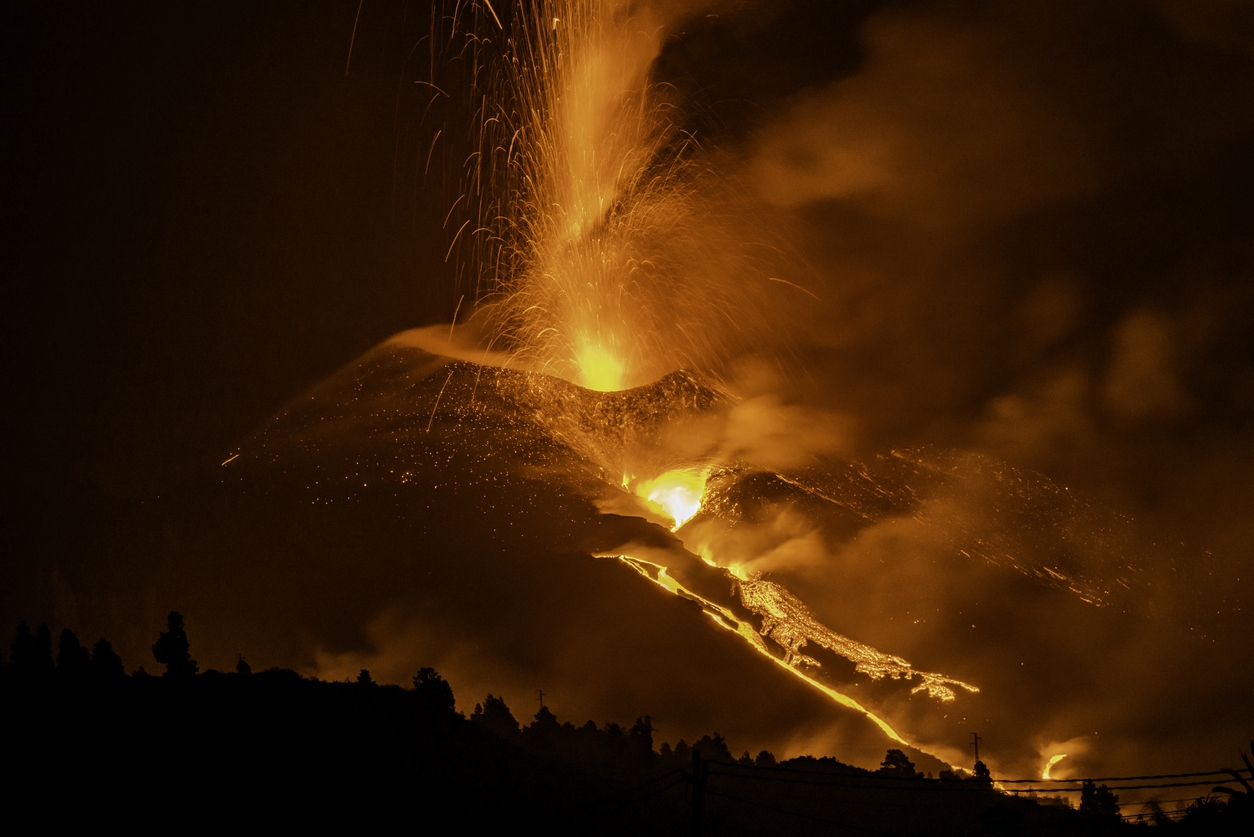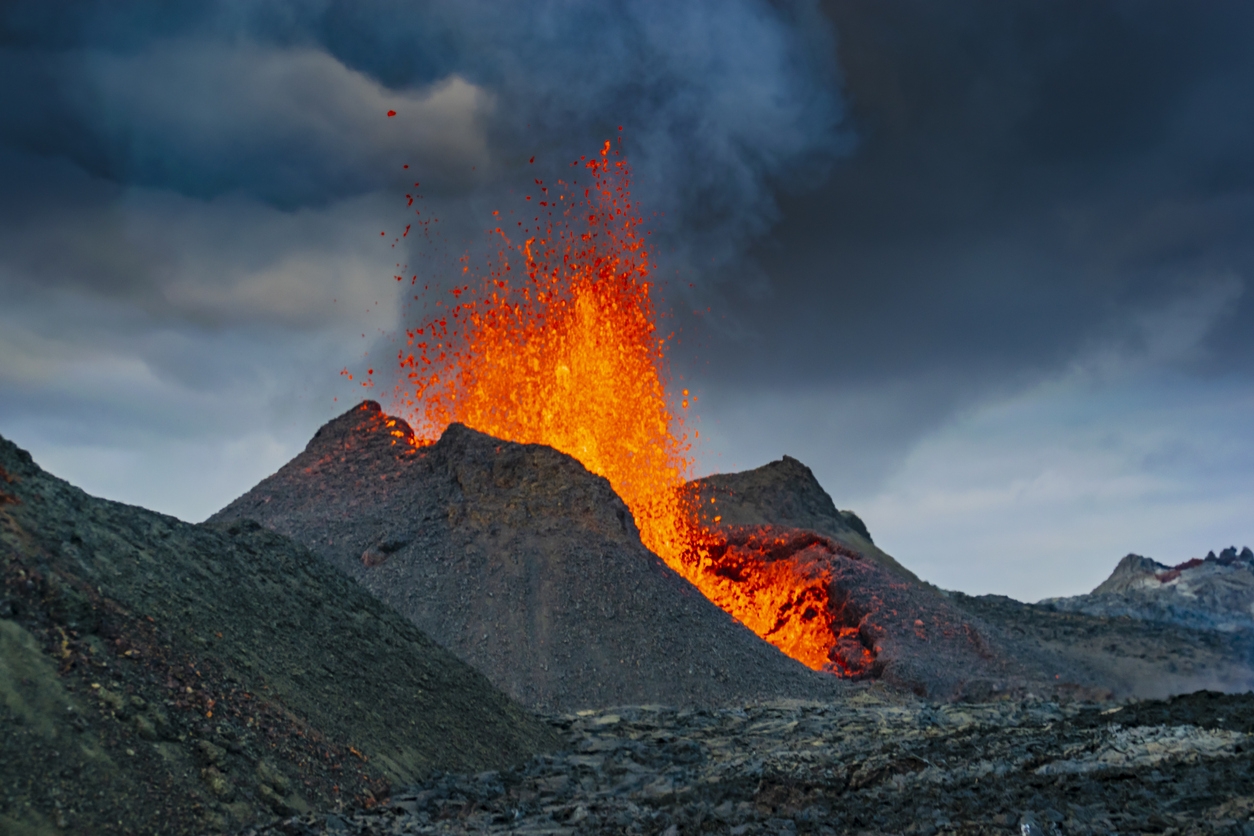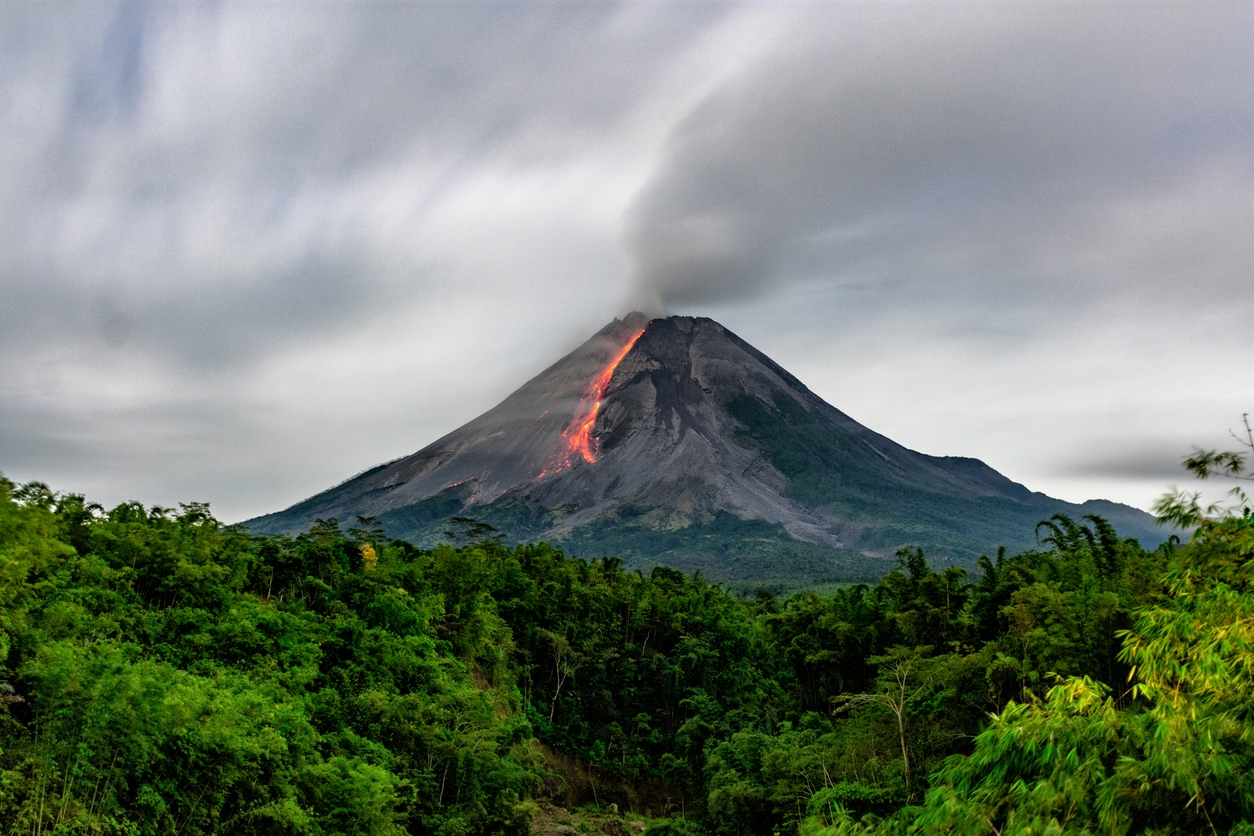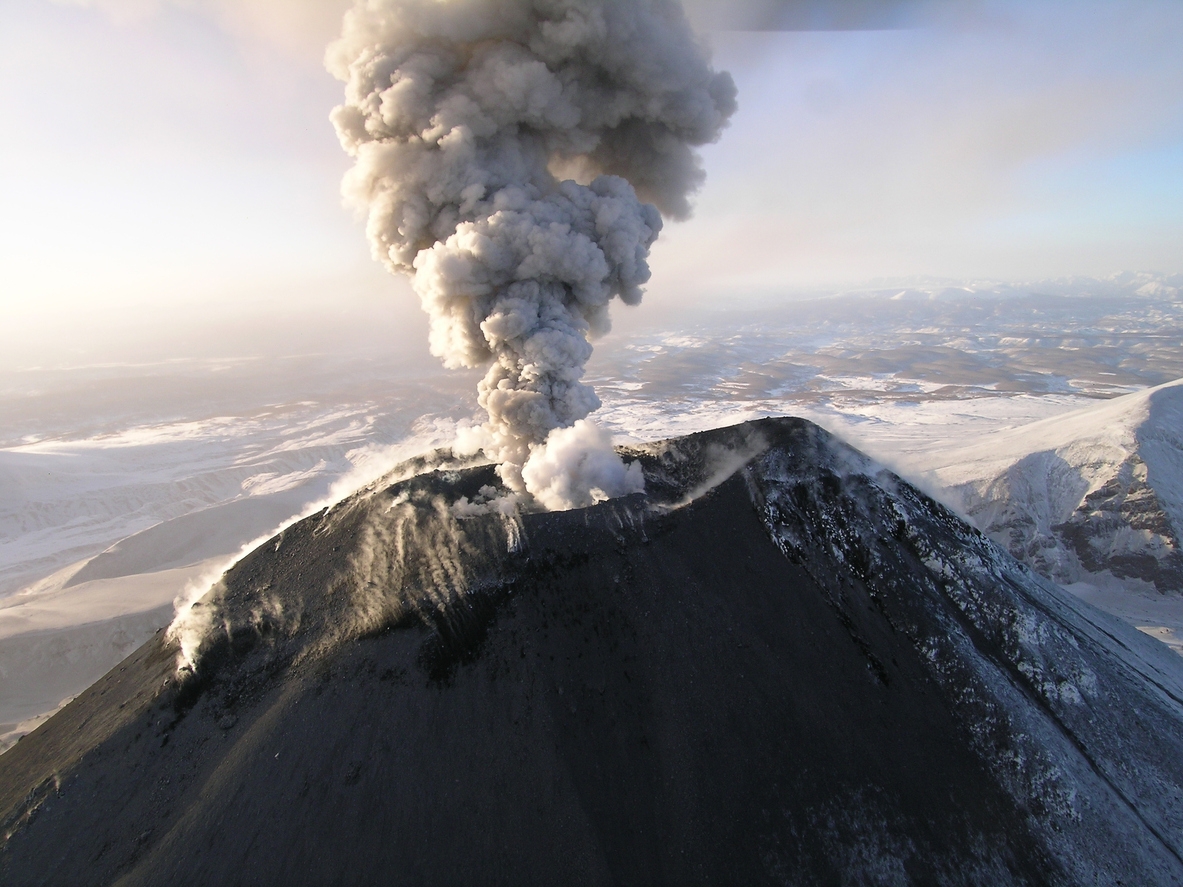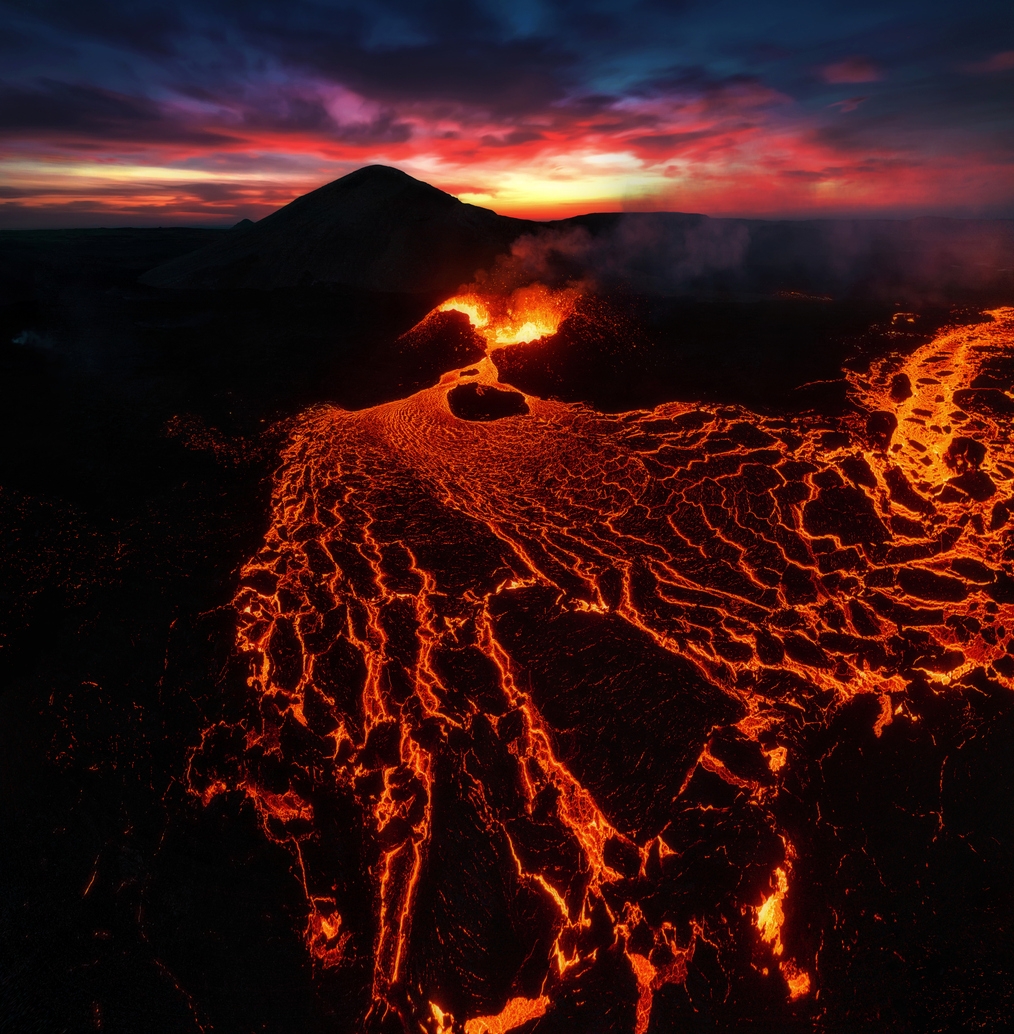When the restless forces stir beneath the Earth’s surface, the result is a volcanic eruption. It is the sudden release of molten rock, ash, and gases from a volcanic vent or fissure on the Earth’s surface. It is a breathtaking yet formidable display of nature’s power. This powerful and awe-inspiring phenomenon has fascinated and sometimes frightened humanity for centuries.
In this post, we trace the series of events triggered by volcanic activity. We’ll try to understand their defining characteristics, impact on the environment, and the processes that drive them. From the internal processes within the Earth to the profound impact on the surrounding environment let’s learn what happens when volcanoes erupt.
The Geological Complexity of Volcanoes
Volcanoes are geological marvels shaped by complex processes deep within the Earth’s crust. Their formation results from the convergence or divergence of tectonic plates, leading to the creation of volcanic structures. [1] These formations, characterized by a central vent or fissure, represent geological windows into the Earth’s inner workings.
The Mechanism of Eruption
A volcanic eruption is triggered to release the pressure from beneath the Earth’s surface. The molten rock, or magma, within a volcano’s chamber. When magma rises towards the surface, it encounters various obstacles, including rock layers and gas bubbles. The pressure builds and eventually, it overcomes the resistance of the surrounding rock, triggering an eruption, expelling magma, gases, and volcanic material. [2]
Magma Formation and Rise
Magma formation is a fundamental precursor to volcanic eruptions. The temperatures and pressure in the Earth’s core are very high.
The conditions cause rocks to melt, forming magma. The heat in the core is also explored as a possibility of renewable source of energy.
Since magma is less dense than the surrounding rock, it rises towards the surface, encountering different rock layers that influence its composition and behavior during eruption. Magma’s journey from its deep origins to the Earth’s crust is a dynamic geological process central to volcanic activity.
Role of Gas Bubbles and Fissures
Gas bubbles within magma play a pivotal role in the eruption process. As magma rises, decreasing pressure allows dissolved gases, primarily water vapor and carbon dioxide, to expand, forming bubbles. These gas bubbles increase the pressure within the magma chamber, contributing to the force behind volcanic eruptions. Fissures, fractures, or conduits within the Earth’s crust provide pathways for the ascent of magma and the expulsion of volcanic material during an eruption.
| Stage | Description |
| Magma Formation | Magma, molten rock, forms beneath the Earth’s surface through the melting of rocks in the Earth’s mantle. |
| Magma Ascent | Pressurized by gases and buoyancy, magma ascends through the Earth’s crust, seeking a pathway to the surface. |
| Gas Expansion | As magma rises, gas bubbles, primarily water vapor and carbon dioxide, expand, creating pressure within the magma. |
| Fracturing of Crust | Increased pressure leads to the fracturing of the Earth’s crust, creating fissures or vents through which magma can escape. |
| Explosive Release of Magma and Gases | The release of pressurized magma, accompanied by gases, leads to an explosive eruption, expelling ash, lava, and rocks. |
These fundamental geological elements illuminate the intricate processes that underlie volcanic eruptions.
Types of Volcanic Eruptions
All volcanic eruptions are not uniform. They manifest in various types each of which is classified by distinct characteristics and consequences. Understanding these types helps comprehend the diverse ways in which volcanoes can impact their surroundings. From gentle effusive eruptions to violent explosive ones, the spectrum of volcanic behavior is vast.
Explosive vs. Effusive Eruptions
One fundamental distinction in volcanic eruptions lies between explosive and effusive types. [3] The distinction between these eruption types is a crucial factor in assessing their potential impact.
| Feature | Explosive Eruptions | Effusive Eruptions |
| Characteristics | Sudden and violent release of pressurized gases and magma | Steady outflow of lava with less explosive force. |
| Type of Magma | Typically, viscous magma with high gas content | Generally, less viscous magma with lower gas content. |
| Eruption Intensity | High-intensity explosions, often reaching great heights | Lower-intensity, continuous lava flow with less violence. |
| Volcanic Hazards | Ash clouds, pyroclastic flows, and volcanic bombs | Lava flows and occasional gas emissions; generally less hazardous. |
Explosive eruptions are violent, energetic releases of gas, ash, and rock fragments. They often result in towering ash columns and significant pyroclastic flows.
Effusive eruptions, in contrast, involve a steady flow of lava onto the Earth’s surface, usually with less explosive force. They often result in lava flows and the creation of new volcanic features.
Lava Flows, Fallout, and Pyroclastic Flows
During volcanic eruptions, three primary products are commonly observed: lava flow, fallout, and pyroclastic flow. [4]
- Lava flows are streams of molten rock that move across the land, impacting local terrain and communities.
- Fallout refers to the deposition of volcanic ash and materials in the vicinity of the eruption, affecting air quality and infrastructure.
- Pyroclastic flows are highly destructive, fast-moving currents of hot gas, ash, and debris that can pose catastrophic threats to areas near the volcano.
Impact on the Environment
With their raw and uncontrollable power, volcanic eruptions can have profound and far-reaching impacts on the environment. [5] These events can reshape landscapes, alter ecosystems, and influence climate patterns. The intensity and duration of an eruption significantly impact the extent of environmental changes. Lava flows, ash deposition, and gas emissions can lead to long-term transformations in affected regions.
Release of Ash and Gases
Contrary to the common myth about the natural phenomenon, volcanic eruptions don’t merely release smoke. Rather, they unleash a combination of ash and gases into the atmosphere. This ash can disrupt air travel, damage agriculture, and create health hazards. While gases like sulfur dioxide can react with atmospheric components, potentially leading to the formation of acid rain, which can harm ecosystems and water bodies.
Contamination of Drinking Water and Soil
Volcanic eruptions can contaminate water sources and soil. Ashfall may infiltrate water bodies, affecting the quality of drinking water. Additionally, volcanic ash can alter soil properties, impacting agriculture and vegetation. The combination of ash and gases can create acidic conditions, further influencing the health of ecosystems.
Understanding the environmental consequences allows for preparedness and mitigation efforts to safeguard both the natural surroundings and human communities.
Health and Safety Concerns
Volcanic eruptions pose significant health and safety concerns for the affected populations. From physical dangers during eruptions to long-term health impacts, These concerns encompass a wide range of hazards. It is essential to take immediate safety measures to protect lives and minimize harm.
Immediate Threats to Life
During volcanic eruptions, several immediate threats to life emerge.
| Immediate Threats to Life | Description |
| Pyroclastic Flows | Swift-moving, superheated ash, and gas clouds endanger lives. |
| Lava Flows | Hot molten rock flows can engulf and destroy communities. |
| Ashfall | Falling volcanic ash can collapse structures and harm people. |
| Lahars (Mudflows) | Mixes of ash and water can rapidly inundate and bury areas. |
| Volcanic Debris | Flying rocks, projectiles, and debris pose direct threats. |
| Toxic Gas Emissions | Hazardous gases can suffocate, poison, or cause chemical burns. |
Pyroclastic flows, which are superheated mixtures of gases and ash that move at great speeds and can be lethal. Additionally, falling volcanic rocks and ashfall can cause injuries or fatalities. Toxic gases, such as sulfur dioxide, released during eruptions can also pose risks to those in proximity to the volcano.
Long-Term Health Impacts
Beyond the immediate dangers, volcanic eruptions can have long-term health impacts too. [6]
| Long-Term Health Effects | Description |
| Respiratory Problems | Inhalation of volcanic ash can lead to lung issues. |
| Eye Irritation | Ash particles can irritate and harm the eyes. |
| Water Source Contamination | Ashfall can contaminate water, posing health risks. |
| Air Quality Degradation | Gases like sulfur dioxide can impact air quality. |
| Mental Health Impacts | Trauma and stress may affect mental well-being. |
| Food and Water Insecurity | Crop and water source damage can lead to scarcity. |
Ashfall can lead to respiratory problems and eye irritation. Volcanic gases like sulfur dioxide can affect air quality and contribute to respiratory issues. Its ash can contaminate water sources, further jeopardizing public health.
Acknowledging and addressing these health and safety concerns is paramount when preparing for and responding to volcanic eruptions, as they encompass the immediate risks to life and the lasting health effects that may affect communities in the aftermath of an eruption.
Economic and Infrastructural Damage
Volcanic eruptions can impose substantial economic and infrastructural damage on communities and regions. The costs associated with the destruction of property, disruption of services, and the need for rebuilding can have lasting impacts on local economies. These events often necessitate comprehensive planning and resources for rebuilding affected regions.
Destruction of Property and Infrastructure
One of the most apparent and immediate effects of volcanic eruptions is the destruction of property and infrastructure. Lava flows, pyroclastic flows, and ashfall can lead to the collapse or damage of residential and commercial structures. This includes the destruction of homes, buildings, roads, and bridges.
The extent of damage can vary, from minor structural issues to complete devastation, necessitating extensive repair or reconstruction efforts.
Impact on Agriculture and Livelihoods
Agriculture and local livelihoods are significantly affected by volcanic eruptions.
| Impacts | Description |
| Crop and Pasture Damage | Ashfall can damage crops and pastures, reducing agricultural yields and impacting food production. |
| Livestock Health | Animals may ingest contaminated vegetation, affecting their health and reducing livestock productivity. |
| Income Loss | Reduced agricultural yields and disrupted livelihoods can lead to income loss for affected communities. |
| Water Contamination | The contamination of water sources can disrupt irrigation and drinking water supplies, further affecting agriculture and community health. |
| Agricultural Recovery | Supporting the recovery of agriculture and livelihoods is a critical aspect of post-eruption relief efforts. |
Ashfall can damage crops and pastures, impacting food production and the income of communities. The contamination of water sources can further disrupt agricultural activities. Supporting affected agricultural communities and restoring their livelihoods are essential components of post-eruption recovery efforts.
Post-Eruption Aftermath
After a volcanic eruption, the aftermath is marked by profound changes to the landscape. Lava that once flowed molten and destructive begins to cool and solidify, contributing to the formation of new rock formations. This phase of the eruption’s aftermath initiates a series of actions, from recovery and rehabilitation to scientific investigation.
Lava Solidification and Rock Formation
As lava cools and solidifies, it transforms into solid rock. [7] This process plays a significant role in shaping the geological landscape. New volcanic features, such as lava domes and volcanic plugs, emerge over time. The specific types of rock formed depend on the composition of the lava and the cooling conditions. Understanding this transformation enhances our comprehension of the volcanic lifecycle.
Recovery and Rehabilitation Efforts
The aftermath of a volcanic eruption is a challenging period for affected communities. The path to recovery demands comprehensive rehabilitation efforts. These endeavors encompass rebuilding damaged infrastructure, restoring agricultural activities, and supporting affected communities in reclaiming their livelihoods. Collaborative initiatives involving government agencies, NGOs, and local communities are essential to facilitate effective recovery and sustainable development post-eruption.
Post-eruption aftermath is a dynamic phase, marked by the transition from destruction to recovery and rebuilding. It provides an opportunity to not only learn from volcanic events but also to demonstrate the resilience and determination of communities in the face of nature’s powerful forces.
Conclusion
The occurrence of a volcanic eruption is a powerful reminder of Earth’s dynamic and ever-changing nature. These events, while imposing significant challenges to the environment, health, economy, and infrastructure, also create opportunities for resilience, adaptation, and scientific study.
The aftermath of a volcanic eruption represents a pivotal juncture, marked by the solidification of lava and the gradual formation of new rock. This geological transition, shaped by the eruption’s intensity, has the potential to influence the landscape for generations to come. By recognizing the enduring influence of volcanic eruptions on our world, we empower ourselves to confront the challenges they present and work towards a more resilient and prepared future.

